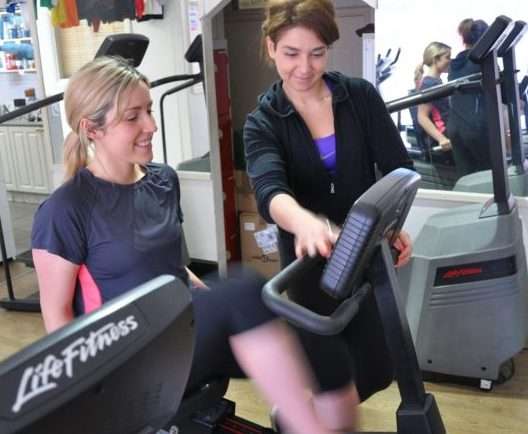
by David Becker, M.D. , Board certified cardiologist at Chestnut Hill Temple Cardiology, Associate Director of Preventive Cardiology at the Temple Heart and Vascular Institute. From: Philly.com
Typically, we exercise to slim down, feel better, and ease our guilt about eating an extra cookie. As a cardiologist, I always remind my patients that including exercise in their lives can also lower blood pressure and decrease the risk of having a heart attack. But those aren’t the only potentially lifesaving effects from exercise.
Here are 10 more reason to exercise — effects that go far beyond benefits for the heart — from studies published in the last year. Here are some of the surprising findings:
1. Arthritis. A March study published in the journal Arthritis Research & Therapy showed that women who walked or biked more than 20 minutes a day had a 35 percent decreased chance of developing rheumatoid arthritis, possibly by decreasing the amount of inflammation in their bodies.
2. Cognitive issues. There is a clear relationship between more exercise and less cognitive decline (also known as dementia). A study from Sports Medicine journal found that these positive benefits come from increased brain volume that comes from increasing blood flow from exercising.
3. Parkinson’s Disease. Exercise was shown to have positive improvements in the way someone with Parkinson’s disease may walk or balance as well as their quality of life and risk of depression. A study published in the Journal of Neurologic Physical Therapy found that supervised exercise programs were more effective than home exercise, especially when done in conjunction with a physical therapist.
4. Cancer. In a recent study from the Journal of Oncology, exercise was found to be effective to reduce heart problems that were common in breast cancer survivors. It was also helpful in preventing the toxic effects of chemotherapy on the heart. These benefits may be from reducing the strain on the heart, and decreasing inflammation of the lining of the coronary arteries. Other studies have shown positive effects in colon, prostate cancer, gynecologic and hematologic cancers.
5. Osteoporosis. Post-menopausal woman are at an especially high risk of breaking bones due to osteoporosis. A study published in the journal Osteoporosis International discovered women who followed a multipurpose exercise program had a dramatically lower risk of breaking their hip and had less back problems.
6. Chronic Pain. People who experience chronic pain often have to rely on narcotics to provide any relief. Because of this, many of these conditions result in decreased mobility, weight gain and depression. A study published in the journal Best Practice & Research: Clinical Rheumatology showed that physical activity, especially when individually tailored to account for physical limitations, improved pain and the ability for those with this difficult problem to get around.
7. Anxiety. It looks like yoga and other forms of exercise can have a major role in helping both anxiety and depression. As reported in the Journal of Psychiatric Research, yoga practice proved to help regulate the sympathetic nervous system and help anxiety.
8. Diabetes. There are 211 studies that have been published on this one topic so far in the year 2015! One such trial, called HART-D, evaluated the impact of exercise training on sugar and being overweight. Exercise helped decrease weight and average sugar levels for almost everyone with diabetes, even those who were unable to become better conditioned with their exercise program
9. Attention Deficit Hyperactivity Disorder. A May review looked at the effectiveness of exercise on ADHD. Adding aerobic exercise (such as walking, jogging, biking and yoga) to a child’s routine helped attention, hyperactivity, and impulsivity in children with ADHD.
10. Pregnancy. A peer-reviewed research article published on PLOS One this year found that half of women stop their exercise due to pregnancy. The number of women who do exercise during pregnancy was related to their level of education, guidance from their doctors, and their amount of exercise before pregnancy. Walking was the most common activity, followed by water aerobics. Women who received guidance from their doctor were three times more likely to exercise while pregnant. Since multiple studies have shown benefits of exercise during pregnancy for both mother and child, this needs to be encouraged.






